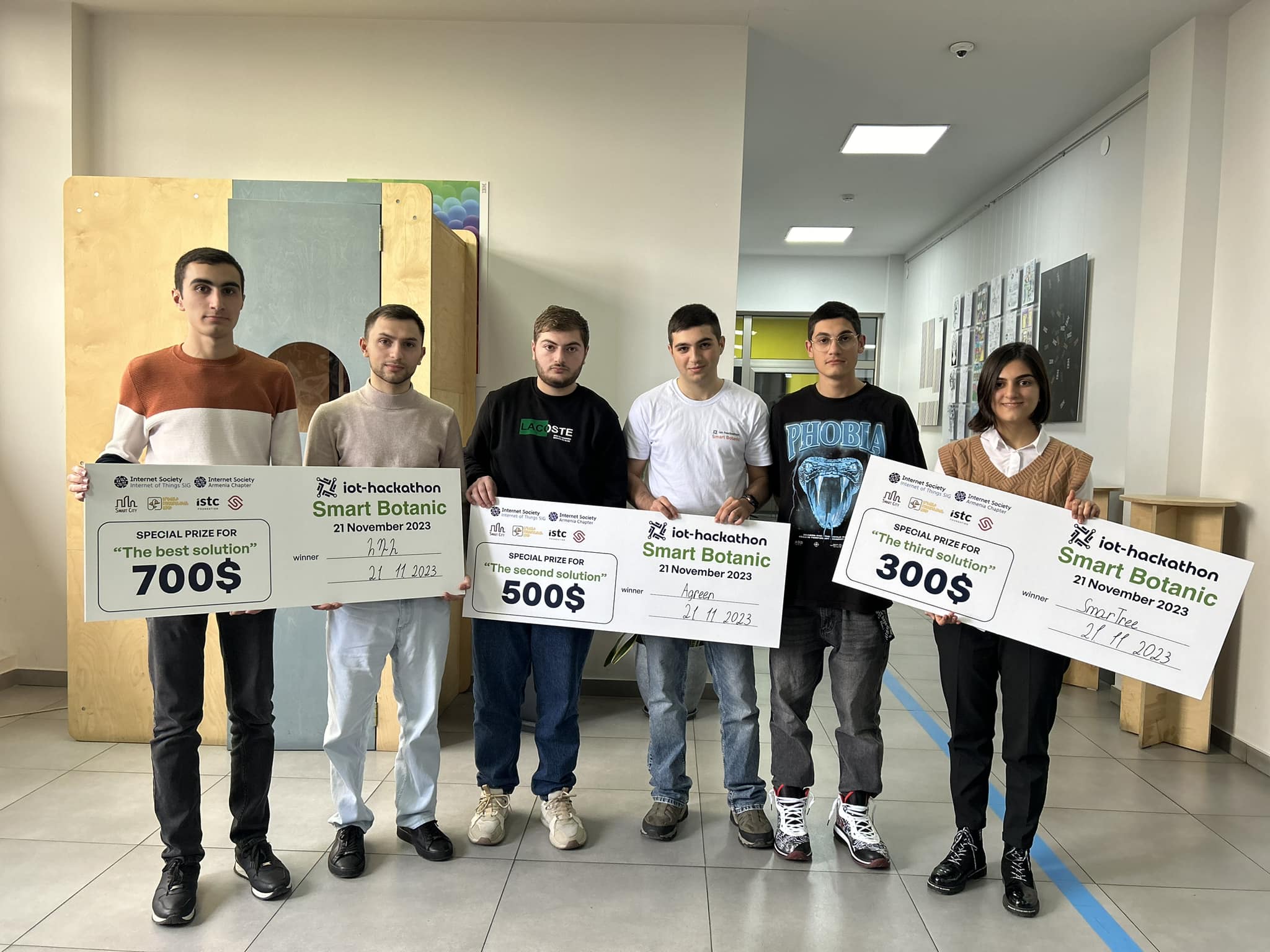
On November 21, participants showcased their ideas and prototypes to the jury and guests. The awards were determined through the unanimous decision of the jury.
The top honor was bestowed upon the "RMS" team, which devised a remote monitoring and automatic control system capable of efficiently overseeing and managing extensive areas. The team employed Lora technology as the communication medium, enabling seamless connectivity across equipment situated several kilometers apart. The central node, constructed on a Raspberry PI microcomputer, is governed by the Home Assistant software interface. The team advocates for utilizing this system in the modernized specific areas within the Botanical Garden.
The second prize was awarded to the AGreen team for their development of a software environment enabling the inventorying of botanical garden plants. The process involves a garden employee approaching a specific plant, capturing a photo, selecting the plant type through a mobile application, and registering it on the botanical garden map with a simple button press. This system is equipped to detect plant diseases and prevent theft. The AGreen team proposes enhancing the plant registration system with a task management subsystem for efficient plant care organization.
Securing the third prize was the Smart Tree team, which introduced a system for monitoring air components in both greenhouses and open spaces. The model is constructed using a Particle Boron microcontroller, allowing mobile communication-based control. The system provides alerts in the event of exceeding permissible air quality limits, with monitoring results displayed on the Home Assistant environment through a unified panel.
The Greensavers team from Senegal emerged as the winner in the category of overseas participants, showcasing the GreenGuardian project. This comprehensive solution integrates IoT technology with advanced data analysis to deliver effective plant care technologies, suitable for deployment in both greenhouse environments and outdoor settings.
Numerous other teams presented equally captivating solutions. For instance, the Garden Whisper team crafted an Armenian language voice assistant, envisioning an automated voice guide for the botanical garden. BlazeBusters team, on the other hand, developed a machine learning model capable of detecting sources of smoke and fire.
At the end of the hackathon, a series of integrated events and meetings were initiated to explore the teams' projects.
The goal is to further refine the details of each project and actively seek funding for projects in the botanical garden./p>







